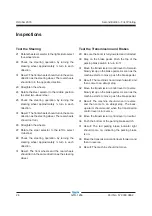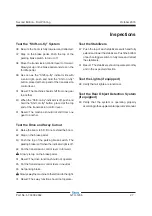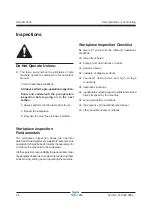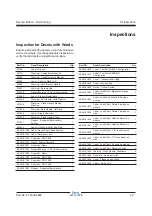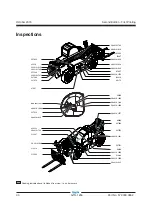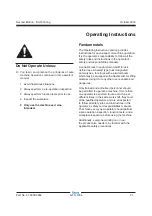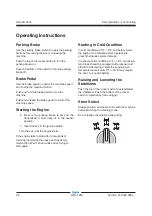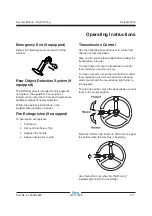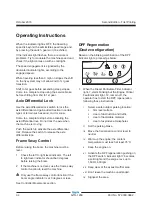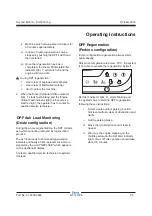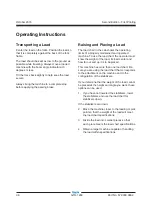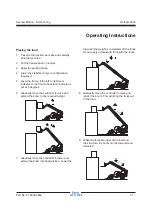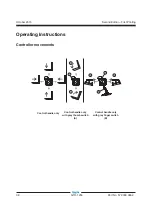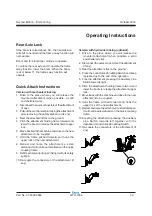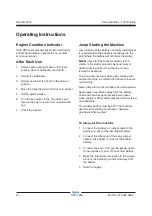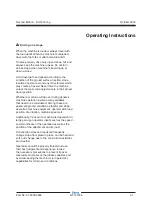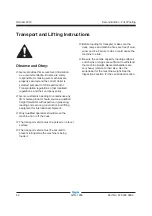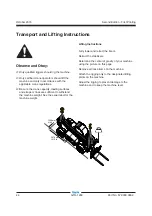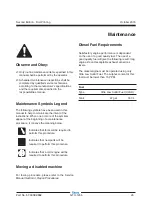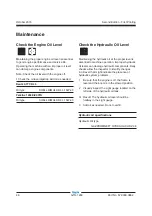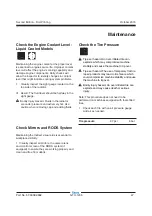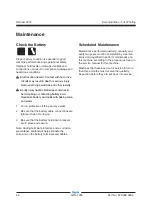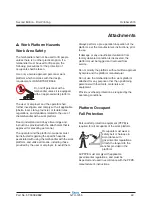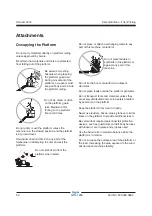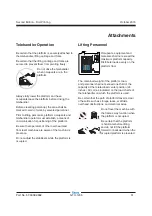
October 2015
36 GTH-1256 Part No. 57.0009.0662
Second Edition - First Printing
Operating Instructions
Raising and Placing a Load
The load chart in the cab shows the operating
limits of a properly maintained and operated
machine. To use the load chart, the operator must
know the weight of the load, its load center and
how far out and up it is to be placed.
This machine has more than one load chart. Be
sure you are using the load chart that corresponds
to the attachment on the machine and to the
configuration of the stabilizers.
If you determine that the weight of the load cannot
be placed at the height and angle you want, these
options can be used:
1 If you have not lowered the stabilizers, lower
the stabilizers and use the load chart for
stabilizers down.
If the stabilizers are down:
2 Move the machine closer to the loading or pick
point so that the weight of the load will meet
the load chart specifications.
3 Divide the load into smaller pieces so that
each piece meets the load chart specifications.
4 Obtain a larger machine capable of handling
the load within specifications.
Transporting a Load
Center the load on the forks. Position the load so
that it is completely against the back of the fork
frame.
The load should be kept as low to the ground as
possible while traveling. Always move a loaded
machine with the boom angle indicator at 0
degrees or less.
Tilt the forks back slightly to help keep the load
secure.
Always bring the machine to a complete stop
before applying the parking brake.





